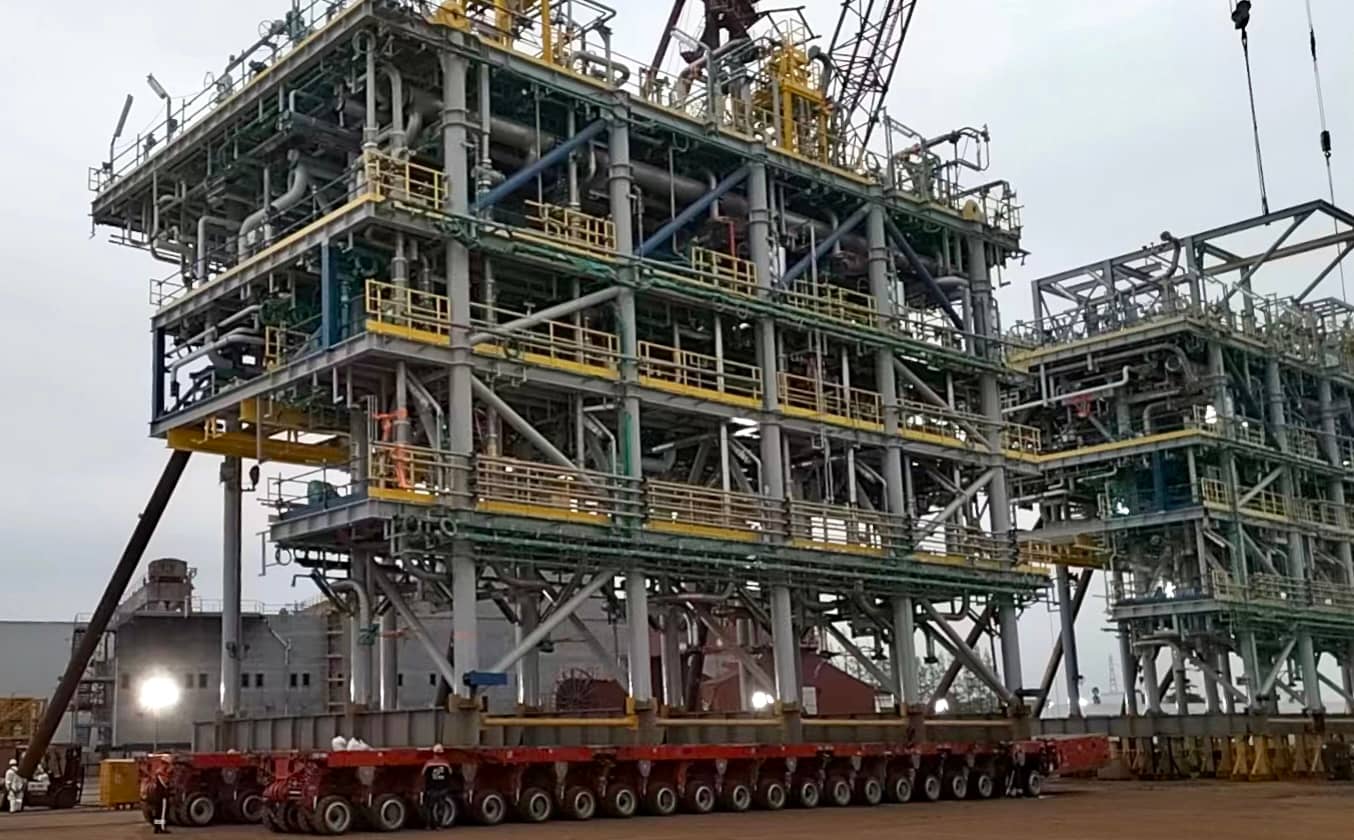FPSO Topside Module Manufacture – Key Considerations
Abstract:
This paper provides an overview of the Floating Production, Storage, and Offloading (FPSO) topside, discussing its critical components and functions, FPSO Topside Module Manufacture. Furthermore, it delves into the manufacturing process of the FPSO topside module, highlighting essential considerations and best practices to ensure efficient and safe production.
Introduction:

Floating Production, Storage, and Offloading (FPSO) vessels have revolutionized offshore oil and gas production, especially in deepwater fields. The topside of an FPSO, which refers to the upper part of the vessel above the waterline, plays a crucial role in these operations. This paper aims to explain what an FPSO topside is and explore the manufacturing considerations vital for its production.
What is FPSO Topside?
The FPSO topside comprises the processing facilities, control rooms, living quarters, and helideck, among other essential components. It serves as the operational hub for offshore drilling and production activities. The topside is designed to safely and efficiently process and store hydrocarbons extracted from underwater wells before they are transported to shore.
Key functions of the FPSO topside include:
- Oil, gas, and water separation.
- Oil storage and offloading.
- Gas compression and export.
- Produced water treatment and disposal.
- Accommodation for the offshore crew.
FPSO Topside Module Manufacturing Considerations:
Manufacturing the FPSO topside module is a complex process that requires meticulous planning and execution. The following are key considerations during its production:
-
Design and Engineering: The design phase is crucial. Engineers must consider the specific operational requirements, environmental conditions, and safety regulations of the deployment location. The design should be optimized for weight, stability, and ease of maintenance.
-
Material Selection: Choosing the right materials for the topside is essential for durability and safety. Materials should be corrosion-resistant, able to withstand extreme weather conditions, and meet all international safety standards.
-
Modular Construction: Modular construction allows for parallel manufacturing processes, which can save time and costs. However, ensuring that modules fit together seamlessly during assembly is critical.
-
Safety Features: Safety is paramount in offshore operations. The topside must be equipped with state-of-the-art safety features, including fire suppression systems, emergency evacuation routes, and life-saving equipment.
-
Quality Control: Strict quality control measures must be implemented throughout the manufacturing process to ensure that all components meet the highest standards. Regular inspections and testing are essential.
-
Transportation and Installation: Planning the transportation and installation of the topside module is crucial. Engineers must consider the size, weight, and complexity of the structure to ensure safe and efficient installation onto the FPSO hull.
-
Compliance with Regulations: Manufacturers must comply with all international and local regulations, including environmental protection laws, health and safety standards, and maritime regulations.
Conclusion:
The FPSO topside is a highly complex structure that plays a pivotal role in offshore oil and gas production. Manufacturing this critical component requires careful planning, engineering expertise, and strict adherence to quality and safety standards. By considering the factors discussed in this paper, manufacturers can ensure that the FPSO topside modules they produce are efficient, safe, and compliant with all relevant regulations.
Learn more about our latest project, looking forward to cooperation with you.
https://www.jsc-safe.com/steel-structures-modules-machining/
